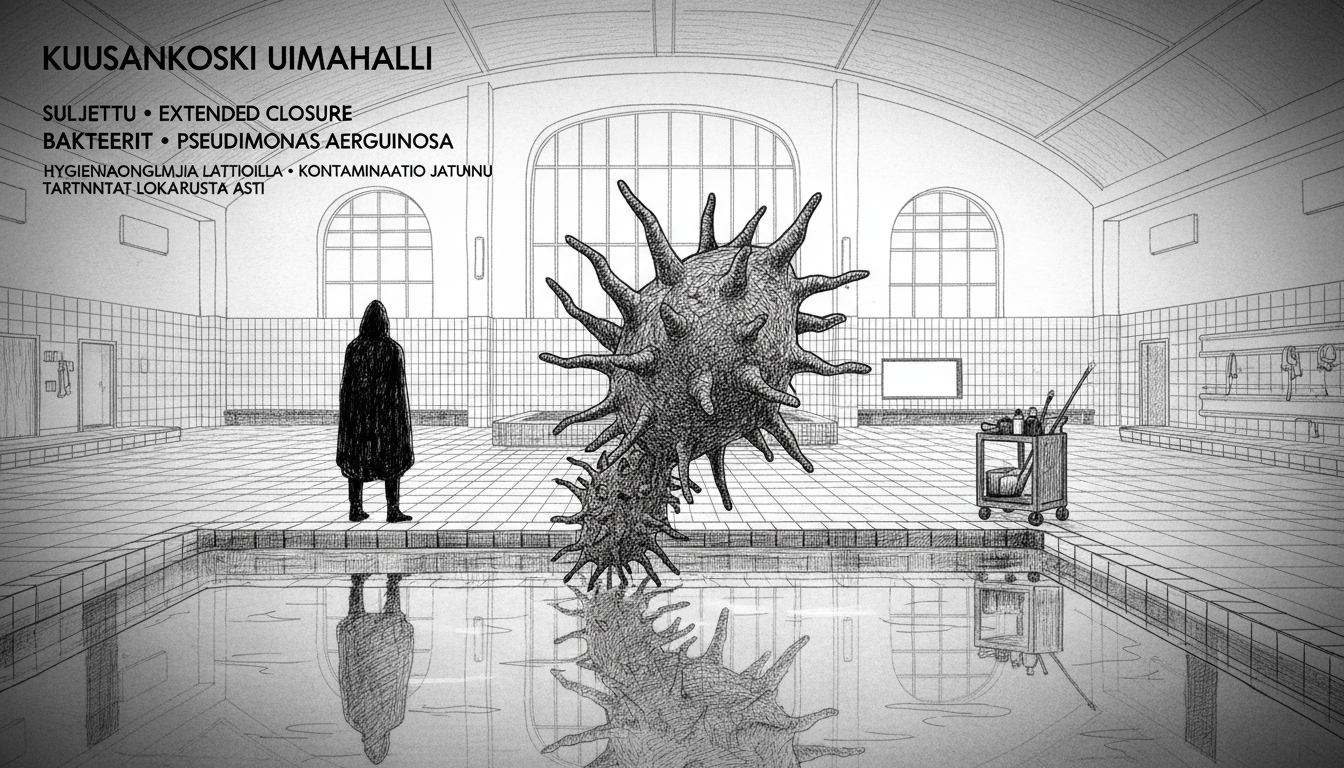The Kuusankoski swimming hall in Kouvola, Finland remains closed for another full week as persistent Pseudomonas aeruginosa bacteria continue to contaminate floor surfaces. Officials confirmed the bacteria was still present in Friday's follow-up tests, despite intensive cleaning efforts earlier this week.
The swimming facility first detected the bacteria in October and has experienced repeated contamination issues since then. Pseudomonas aeruginosa can cause skin rashes and external ear canal infections, posing particular health risks in aquatic environments.
Kirke Roos, the city's sports facilities manager, explained the current situation. 'The latest tests showed the pool waters were clean, but bacteria remained on floor surfaces,' Roos said in a statement. 'We cannot determine for certain whether the bacteria has been continuously present in the facility or if it's being repeatedly introduced by users.'
This stubborn bacteria presents special challenges for swimming pool maintenance. Pseudomonas aeruginosa demonstrates strong resistance to chlorine treatment, making elimination particularly difficult in pool environments. Finnish pool water quality regulations explicitly prohibit any presence of this bacteria in swimming water.
The contamination typically enters pool facilities through users and then transfers to pool water when pre-swim hygiene practices are inadequate. Bacteria from the Pseudomonas family easily transfer to pool surfaces via swimmers and can contaminate the water if washing procedures are insufficient.
While the Kuusankoski facility faces extended closure, nearby swimming halls in Valkeala and Inkeroinen show no bacterial contamination. The city has intensified monitoring across all municipal pools to ensure proper user hygiene before entering the water.
Roos emphasized critical hygiene protocols for all pool visitors. 'The most important thing is that before entering the pool, customers wash with soap without their swimsuit,' she stated. 'Pool changing rooms provide soap if swimmers forget their own washing supplies.'
Additional hygiene measures include thoroughly wetting and washing hair before swimming or wearing a personal swimming cap. The city also requires sauna use without swimwear to ensure body cleanliness before entering pool areas.
The current closure marks the second extended shutdown for the Kuusankoski facility. During an October closure that lasted over a week, the city conducted comprehensive cleaning including chlorine treatment, emptying and scrubbing the small pool, and deep cleaning changing rooms, shower facilities, and the entire pool area. The spa pool and all customer swimming equipment also underwent thorough disinfection.
Despite the repeated closures, the city won't increase swimming hours at other facilities. 'During the previous closure, we wanted to offer swimming opportunities for autumn break visitors,' Roos explained. 'But other halls didn't see increased visitor numbers even with extended opening hours.'
The persistent bacterial issues at Kuusankoski highlight the challenges municipalities face maintaining public pool hygiene standards. The situation raises questions about whether current cleaning protocols adequately address resistant bacteria strains in community swimming facilities.
Public pool maintenance requires balancing accessibility with health safety, and repeated closures strain this balance. The Kuusankoski case demonstrates how persistent bacterial contamination can disrupt community services despite rigorous cleaning efforts.
Finland's cold climate makes indoor swimming facilities crucial for year-round aquatic activities, making such extended closures particularly disruptive for regular users. The situation underscores the importance of both facility maintenance and user responsibility in maintaining hygienic swimming environments.

